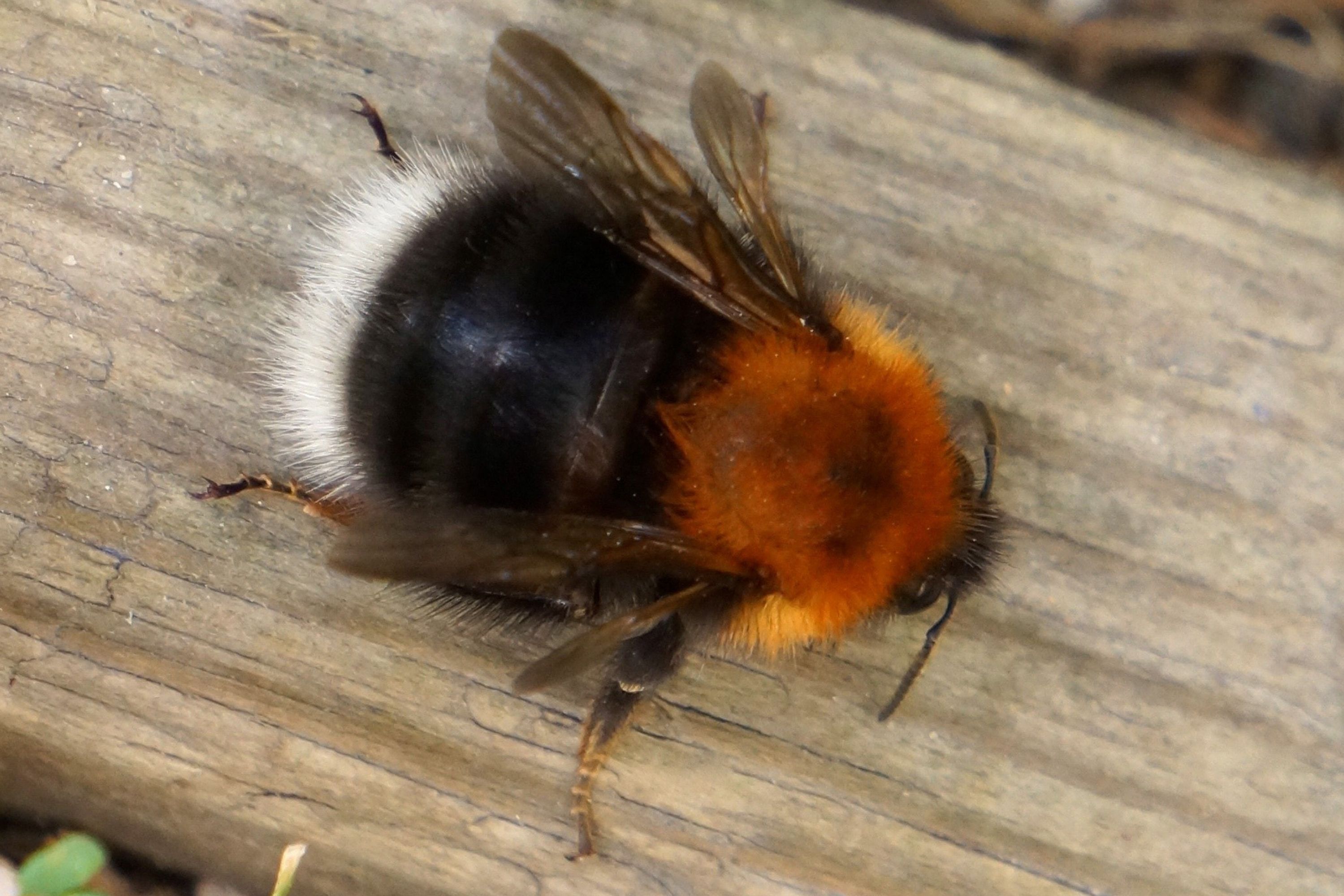Rusty Patched Bumble Bee
(Bombus affinis)

Description
Bombus affinis, commonly known as the rusty patched bumble bee, is a species of bumblebee endemic to North America. Its historical range in North America has been throughout the east and upper Midwest of the United States, north to Ontario, Canada, where it is considered a "species at risk", east to Quebec, south to Georgia, and west to the Dakotas. Its numbers have declined in 87% of its historical habitat range. On January 10, 2017, the United States Fish and Wildlife Service placed B. affinis on the list of endangered species, making the rusty patched bumblebee the first bee to be added to the list in the continental United States (seven species of yellow-faced bees native to the Hawaiian islands were added in 2016). Large differences are seen in morphology between both queens and workers, and males. Queens are about 20–22 mm (0.79–0.87 in) in length and 9–11 mm (0.35–0.43 in) in width, which is larger than workers that are typically about 10–16 mm (0.39–0.63 in) in length and 6–9 mm (0.24–0.35 in) in width. Both queens and workers have black hair that covers their heads, much of their legs, and the bottom of their abdomens. They also both have completely yellow hair on the majority of their abdomens, except for a small section near the area closest to the rear end of the bee. B. affinis requires three different types of habitats (each for foraging, nesting, and hibernating) which are geographically close to one another, making this species particularly vulnerable to extinction. It requires a temperate climate, and can even withstand cold temperatures that most species of bumblebees cannot. In addition, B. affinis has been found at elevations as high as 1600 m. B. affinis is known to visit a number of sites for foraging, including sand dunes, farmland, marshes, and wooded areas. Members actively forage between April and October, thus requiring flowers to bloom for a long period of time. B. affinis nests are strikingly similar to other species of bees, which makes them difficult to locate. However, queen and workers work together to make individual cells and honey pots out of wax stores. In terms of their hibernating habitat, little information is known. B. affinis queens overwinter, but they most likely will live underground or burrow into rotting logs during the winter to survive. While B. affinis' habitat used to be highly prevalent, a large decline has occurred in recent years, possibly due to increased land development and agricultural use.
Taxonomic tree:







